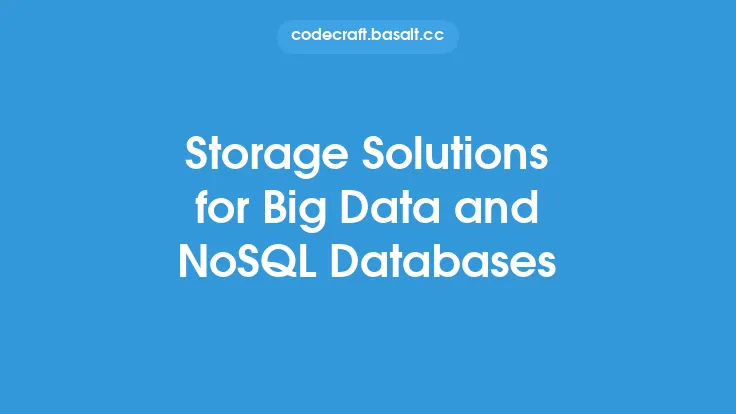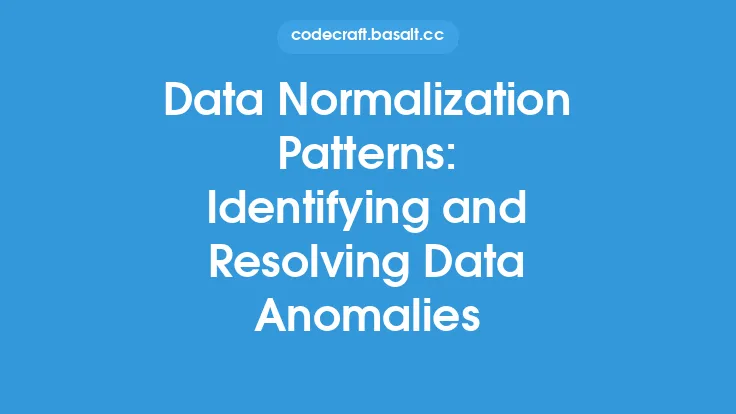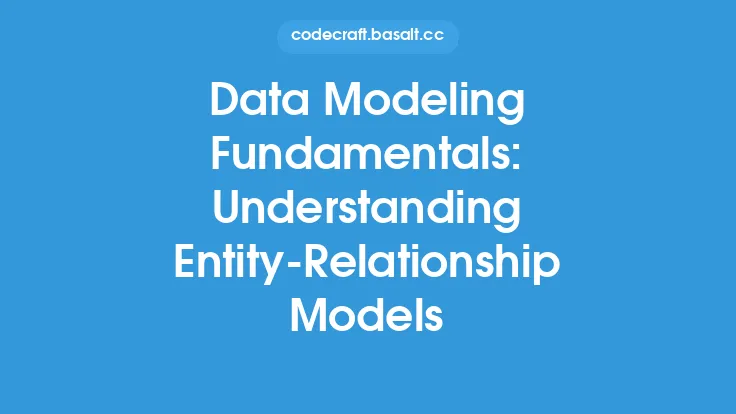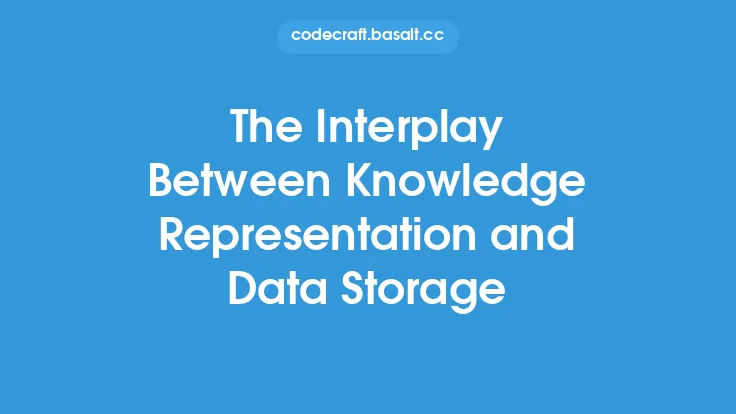The increasing volume, variety, and velocity of data have led to the emergence of big data and NoSQL databases, which have transformed the way we store, process, and analyze data. Traditional data modeling techniques, which were designed for relational databases, are no longer sufficient to handle the complexities of big data and NoSQL databases. As a result, data modeling for big data and NoSQL databases has become a critical aspect of database systems, requiring specialized techniques and approaches.
Introduction to Big Data and NoSQL Databases
Big data refers to the vast amounts of structured, semi-structured, and unstructured data that are generated by various sources, such as social media, sensors, and mobile devices. NoSQL databases, on the other hand, are designed to handle large amounts of unstructured or semi-structured data and provide flexible schema designs, high scalability, and high performance. NoSQL databases can be categorized into several types, including key-value stores, document-oriented databases, graph databases, and column-family stores. Each type of NoSQL database has its own strengths and weaknesses, and the choice of database depends on the specific use case and requirements.
Data Modeling Challenges for Big Data and NoSQL Databases
Data modeling for big data and NoSQL databases poses several challenges, including handling large amounts of data, dealing with varying data structures, and ensuring data consistency and integrity. Traditional data modeling techniques, such as entity-relationship modeling, are not well-suited for big data and NoSQL databases, as they require a fixed schema and are not designed to handle large amounts of unstructured or semi-structured data. Additionally, big data and NoSQL databases often require real-time data processing and analysis, which can be challenging using traditional data modeling techniques.
Data Modeling Techniques for Big Data and NoSQL Databases
Several data modeling techniques have been developed to address the challenges of big data and NoSQL databases, including schema-less data modeling, flexible schema data modeling, and data vault modeling. Schema-less data modeling involves designing a database without a predefined schema, allowing for flexible and dynamic data structures. Flexible schema data modeling involves designing a database with a flexible schema that can be modified as needed, allowing for adaptability and scalability. Data vault modeling involves designing a database as a collection of entities, each with its own set of attributes, allowing for data integration and consistency.
Data Modeling Tools and Technologies for Big Data and NoSQL Databases
Several data modeling tools and technologies have been developed to support big data and NoSQL databases, including data modeling software, data integration tools, and data governance platforms. Data modeling software, such as Entity-Relationship Diagram (ERD) tools and data modeling tools, provide a graphical interface for designing and implementing data models. Data integration tools, such as Extract, Transform, Load (ETL) tools and data virtualization tools, provide a way to integrate data from multiple sources and formats. Data governance platforms, such as data quality tools and data security tools, provide a way to ensure data quality, security, and compliance.
Best Practices for Data Modeling in Big Data and NoSQL Databases
Several best practices have been developed for data modeling in big data and NoSQL databases, including designing for flexibility and scalability, using data modeling tools and technologies, and ensuring data quality and integrity. Designing for flexibility and scalability involves creating a data model that can adapt to changing requirements and growing data volumes. Using data modeling tools and technologies involves leveraging software and platforms to design, implement, and manage data models. Ensuring data quality and integrity involves implementing data governance and data quality processes to ensure that data is accurate, complete, and consistent.
Real-World Applications of Data Modeling in Big Data and NoSQL Databases
Data modeling for big data and NoSQL databases has several real-world applications, including social media analytics, IoT data processing, and customer experience management. Social media analytics involves analyzing large amounts of social media data to gain insights into customer behavior and preferences. IoT data processing involves processing and analyzing large amounts of sensor data from IoT devices to gain insights into device behavior and performance. Customer experience management involves analyzing customer data to gain insights into customer behavior and preferences, and using that information to improve customer experience.
Future Directions for Data Modeling in Big Data and NoSQL Databases
The future of data modeling for big data and NoSQL databases is likely to involve increased use of artificial intelligence and machine learning, greater emphasis on data governance and data quality, and more widespread adoption of cloud-based data modeling tools and technologies. Artificial intelligence and machine learning can be used to automate data modeling tasks, such as data discovery and data integration, and to improve data quality and integrity. Greater emphasis on data governance and data quality will be necessary to ensure that data is accurate, complete, and consistent, and that it is used in a way that is compliant with regulations and laws. Cloud-based data modeling tools and technologies will provide greater flexibility and scalability, and will enable organizations to more easily design, implement, and manage data models.





